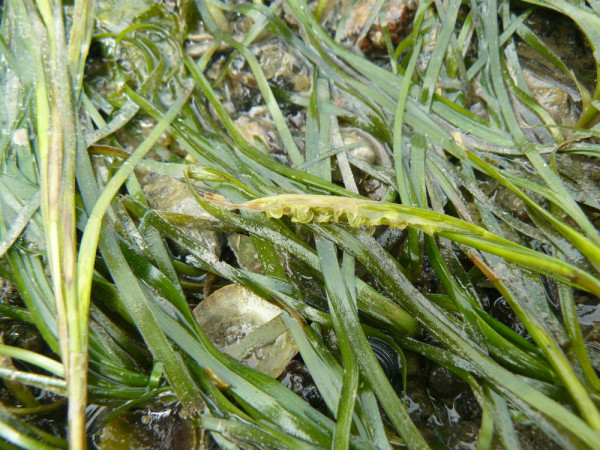Compensation Blues (a.k.a. Cold comfort for Eelgrass)
In the world of marine environmental impacts, there’s something called compensation. It goes like this: if a particular habitat is damaged or destroyed because of a project, then the company building has to make up for it by creating habitat elsewhere, ideally in the same site by promoting restoration of the same type of species. When this isn’t feasible, the restoration can be done at another location or for a similar kind of habitat. The idea is that as long as the total amount of productive habitat for fish is maintained, then the impacts are deemed to be acceptable.
It’s a simple enough idea, but as the saying goes, “For every complex problem there is an answer that is clear, simple, and wrong.” Such is the case with eelgrass – a marine plant that grows both underwater and in the intertidal zone, especially in the vicinities of estuaries. On the decline worldwide, eelgrass is considered critical habitat for myriad species. Eelgrass helps stabilize sediments, processes nutrients, provides foraging habitat for seabirds, and importantly, plays the role of nursery for salmon at the key juvenile stage of their life cycle prior to their migrating out to the deep ocean. So it’s not just a question of how much of the stuff is out there… what is crucially important to understand where it is, in relation to major rivers and estuaries. From here we can better understand the real value of eelgrass in maintaining species richness and productivity.
In Northwest BC, WWF-Canada has been supporting research on eelgrass, particularly in Chatham Sound on the North Coast. Facing significant growth and multiple development projects, the region is also where you’ll find the estuary of the Skeena River – BC’s second largest salmon river and one of Canada’s most important wild rivers. As a bottleneck for literally millions of salmon every year, the region has sustained coastal livelihoods, First Nations cultures, and a diverse range of commercial and recreational fisheries valued at upwards of $100 million dollars annually.
To complicate things further, eelgrass is notoriously fickle when it comes to restoration efforts. Even when the stuff can be introduced into new areas, the species that rely on the habitat can’t be expected to conveniently relocate to a different geography. In other words, critical habitat is fundamentally part of the geography where it occurs. That’s why we call it ‘critical’.
By documenting the distribution and abundance of eelgrass in Chatham Sound, and bringing this information to planning tables, resource managers, and environmental assessment agencies, we are helping to support healthy estuaries, and to gradually transform the management and policies for development.
Common sense tells us the next step… if we want to keep estuaries healthy, then we have to look honestly at the footprint of development and ask the same questions we ask about eelgrass: where and how much. In the end, complex and beautiful systems such as estuaries deserve no less.


